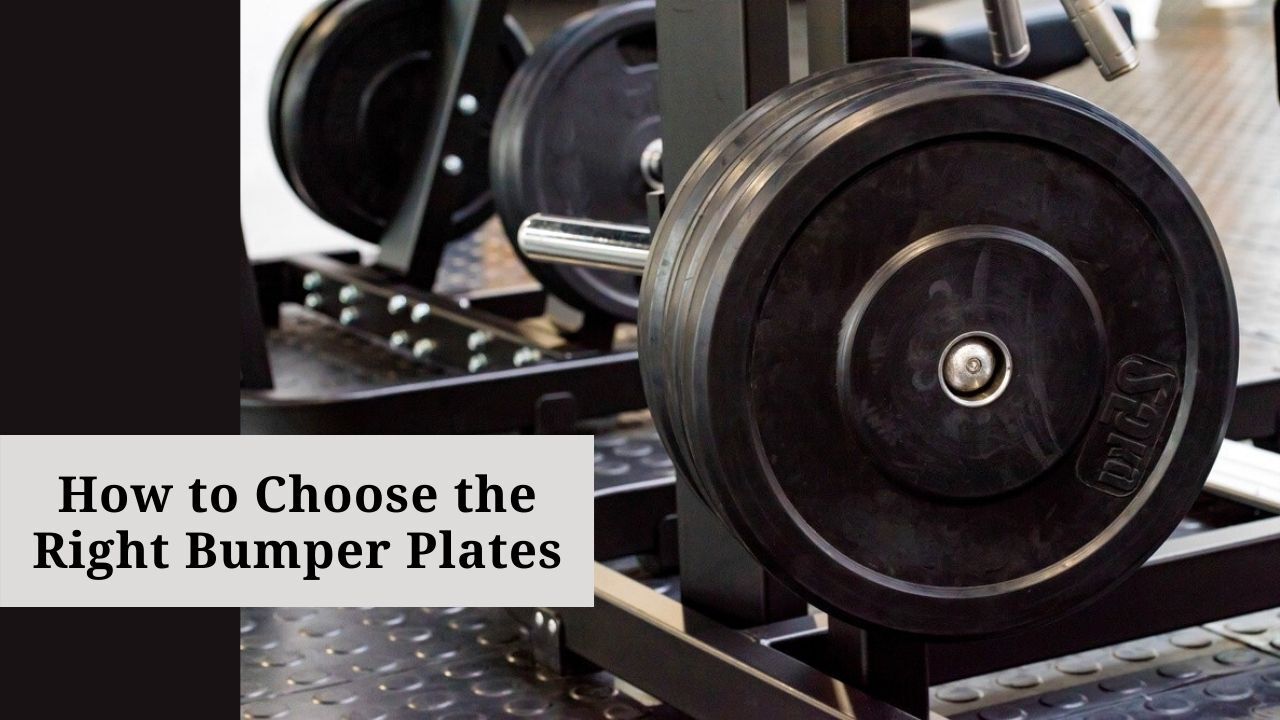How to Select the Right and Best Bumper Plates?
Ready to do some weight plate exercises at your home gym but confused about bumper plates. Also, you don’t know whether steel plates, rubber bumper plates, or Olympic plates are best. So we have got something for you right here.
Types of Weight Plates
The first thing to figure out is the type of training you’ll be doing. Is it powerlifting, weightlifting, or Olympic lifting? This will help you determine the plate to be used.
Steel Plates
In general, steel plates are used for strength training like powerlifting, barbell training, deadlifts, and squats. Although, many strength trainers prefer bumpers for deadlifts, as they don’t make a sound. For anything that isn’t an Olympic lift, cast-iron plates would be best as the steel plates cost less than their counterparts.
Steel Weights with Rubber/Urethane Coating
Urethane-coated steel plates are also made for strength training. Commercial gyms prefer these weights over steel plates because they have a better look than raw iron, are safer and quieter.
Urethane-coated plates cost near bumper plates, despite having no features like the bumpers. Also, they can’t be dropped from overhead, thus not at all suitable for Olympic lifts. If you prefer this price range then you get a cleaner look than raw iron and less clang and bang. However, by investing a little more in bumper plates, you get more bang.
What are Bumper Plates?
Bumpers are a type of weight plate made entirely of dense rubber with a steel or brass collar in the middle, majorly used with Olympic bars.
Characteristics of Bumper Plate
The plates are Olympic-sized and offer the same weight spectrum as cast-iron training plates. The bumpers usually come in black but are also available in colour variations. Competition bumpers strictly follow coloured coding. Initially, Olympic weightlifters used cast-iron plates with careful lowering and dropping. Now, bumpers feature a steel disc in the centre which increases the weight without compromising its thickness.
Bumper plates are sold in pairs and a wide variety of colours and finishes. However, there are many more important points to be considered.
Consider these four features while selecting the best quality bumper plates –
- Slide: The bumper’s inner steel ring should perfectly fit the bar’s sleeve, otherwise the weights can slide when rings are too wide.
- Bend: Combination of poor rubber quality and excess slimness bend the plates which results in an imbalanced load.
- Durability: Cracking is the number one threat to bumpers. Bumper plates are dropped constantly, so inferior quality plates will crack around the inner ring, which imbalances the bar.
- Bounce: They must bounce just right, more like a baby rabbit hop.
Advantages of Bumper Plates
1. Safer: In Olympic lifts, heavy plates are moved overhead from where the plates are to be dropped to move out of fatigue. So the rubber construction on bumpers allows us to drop them safely without any risk of damage to the floor, platform, bar, plates, or lifters. For this reason, bumpers are ideal for home gyms. You won’t be worried about your foundation, that they will chip or crack on impact.
2. Workout Flexibility: Bumper plates provide future flexibility. Lots of athletes have come back to Olympic lifting now seeing its flexibility. Even if you don’t find yourself doing workouts that require them, you will want to invest in them, so that you have some options for future use.
3. Quieter: Working out with steel plates, makes gyms sound like a construction site. No matter how smooth or gentle you use them, steel plates make bad noise. Bumper plates don’t make such a sound, so are preferred for soundless environments.
Bumper plates come in a few standard sizes and are generally sold in pounds or kilograms.
Standard Weight Plate Dimensions & Purpose
Here is a chart describing the purpose of each weight plate size –
Bumper Weight | Best For |
10 lbs ~ 5 kg | Teaching or Learning Olympic Lifts. |
15 lbs ~ 7 kg | Same use as the 10lbs, with Greater Durability |
25 lbs ~ 11 kg | Popular Weight, very durable, and throwing these on an Olympic bar gives you 95 pounds |
35 lbs ~ 16 kg | Majorly used for Adding More Weight on the bar |
45 lbs ~ 20 kg | The most popular weight size for Gyms This weight will let you load up your bar and help in some Serious Strength Gains |
55 lbs ~ 25 kg | Act as an additional weight to 55lbs bumpers Add some more serious weight to the bar. |

